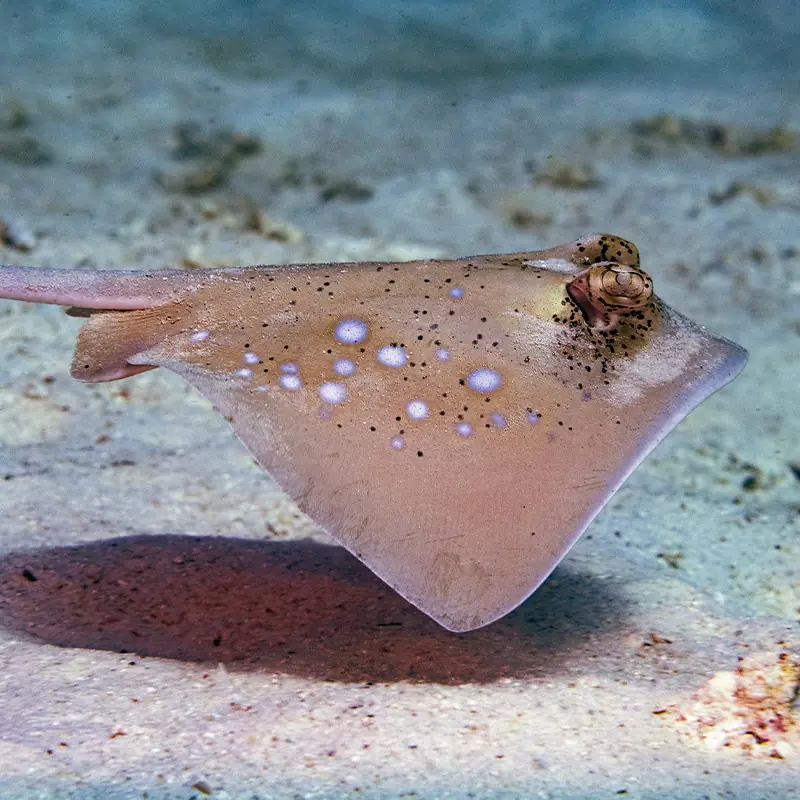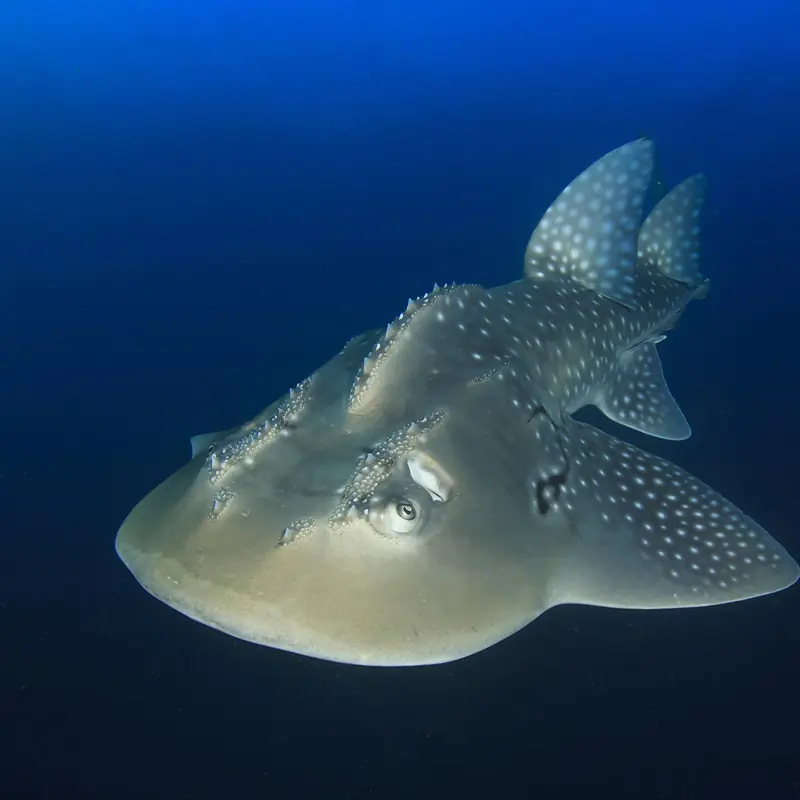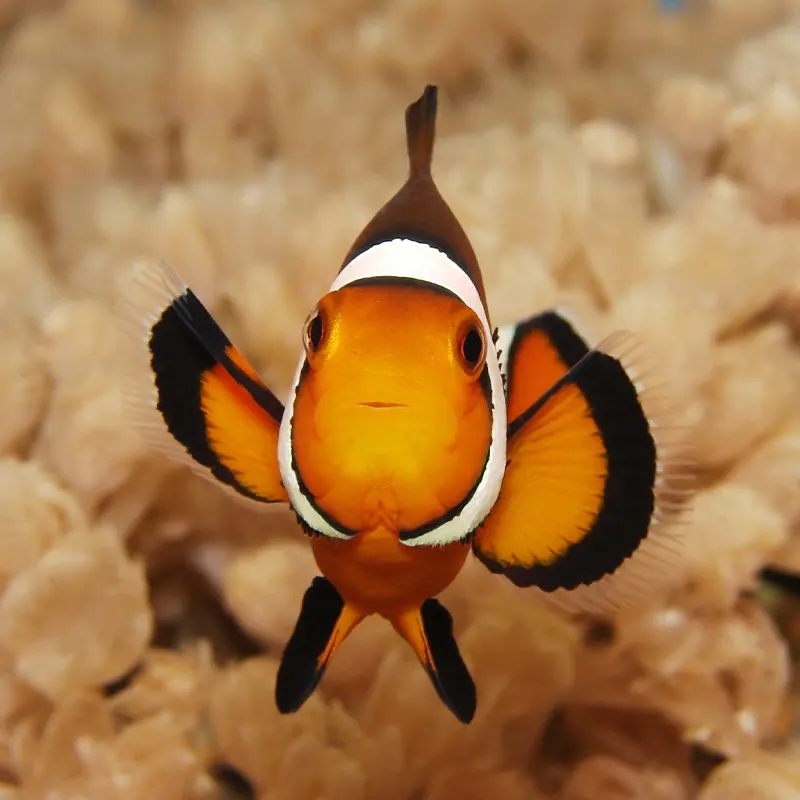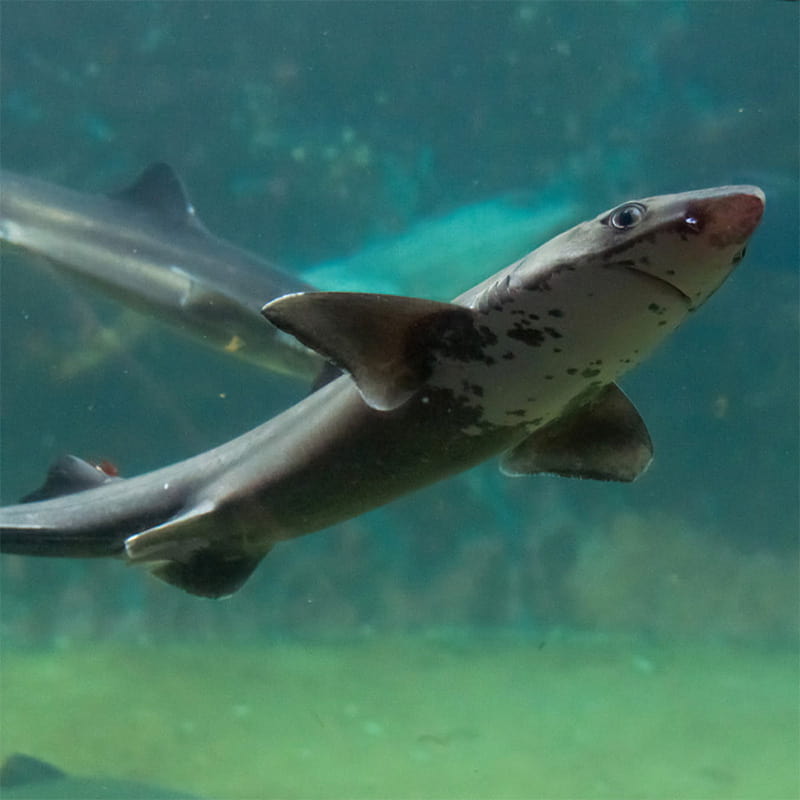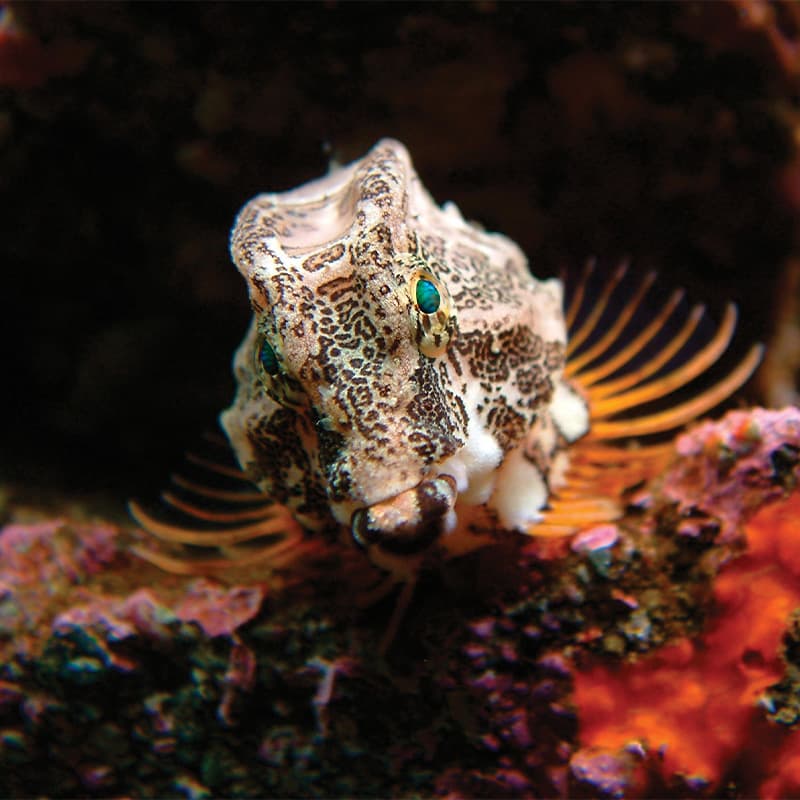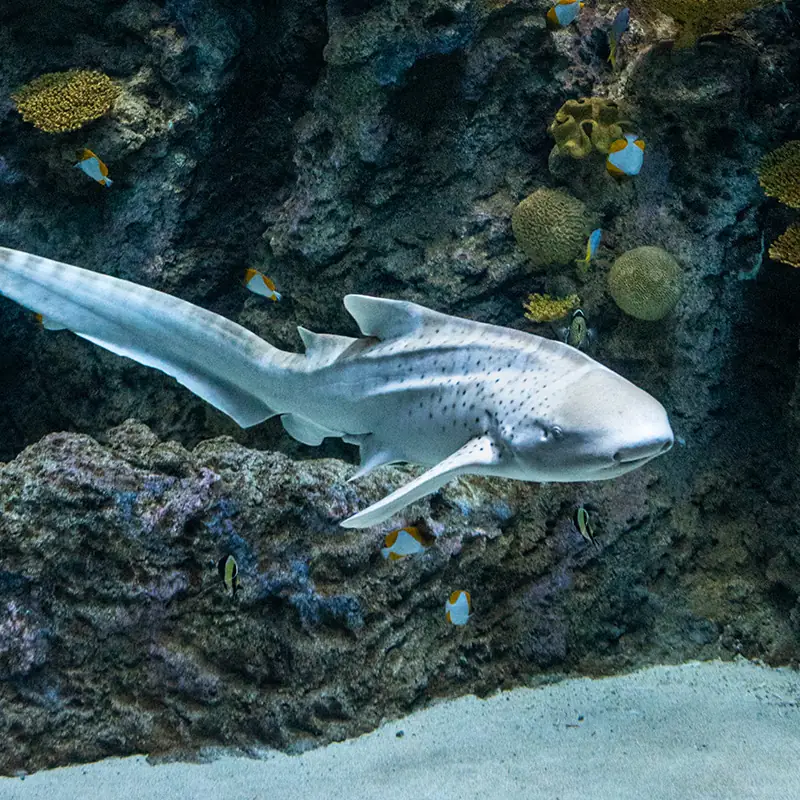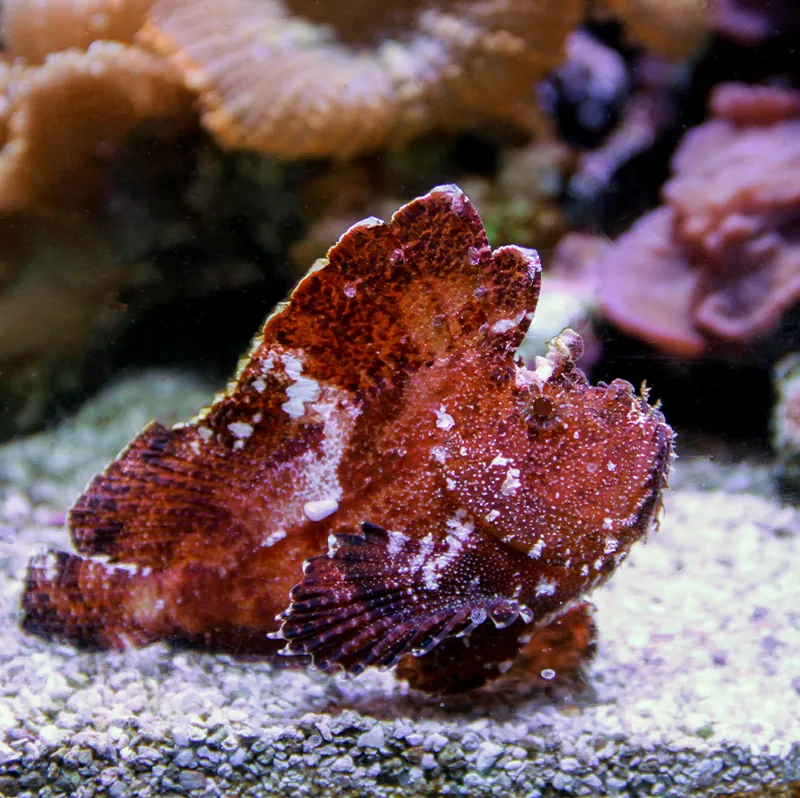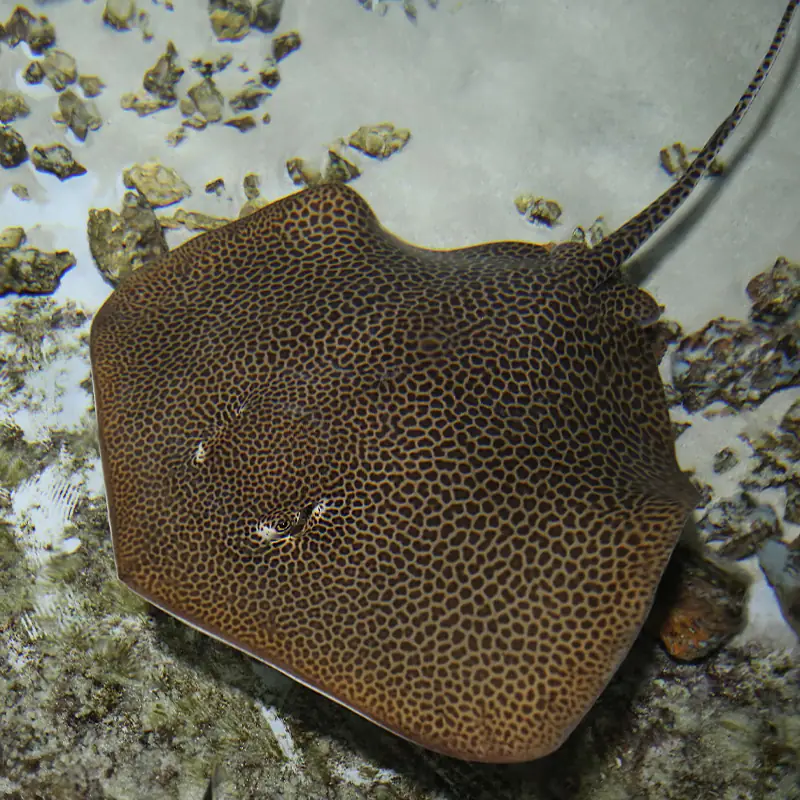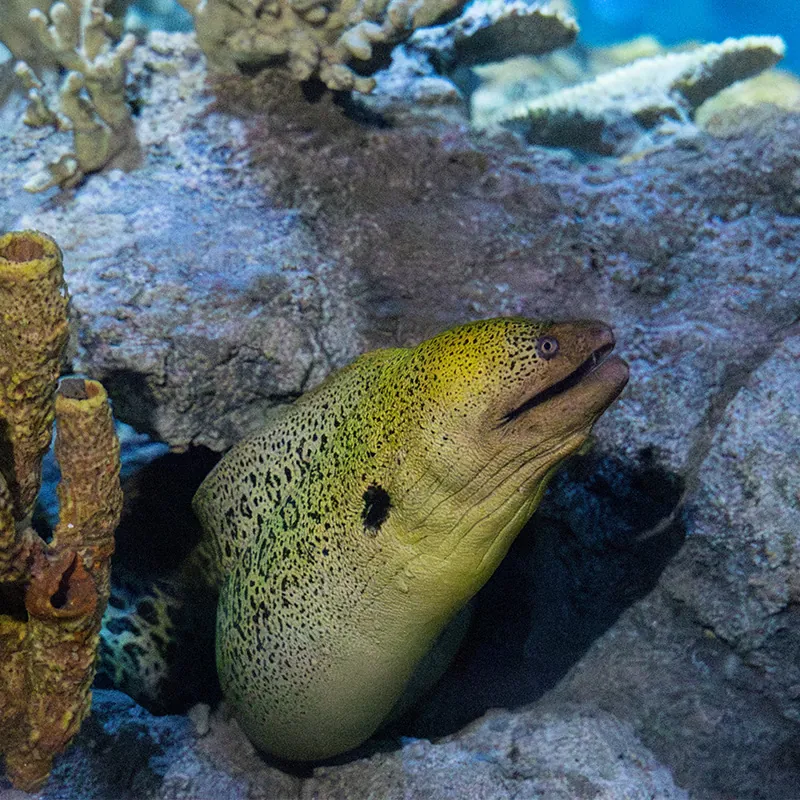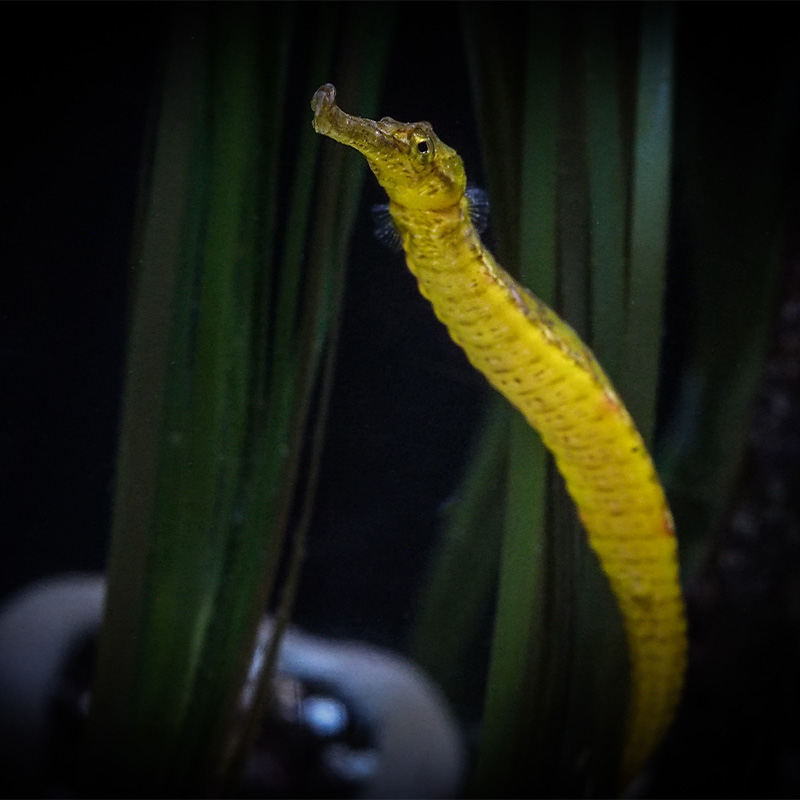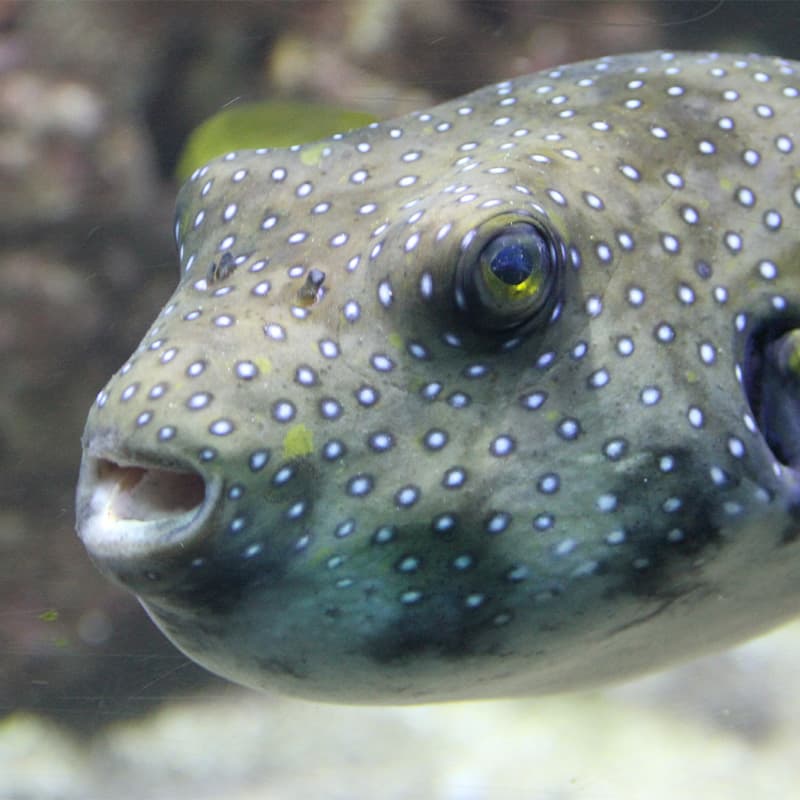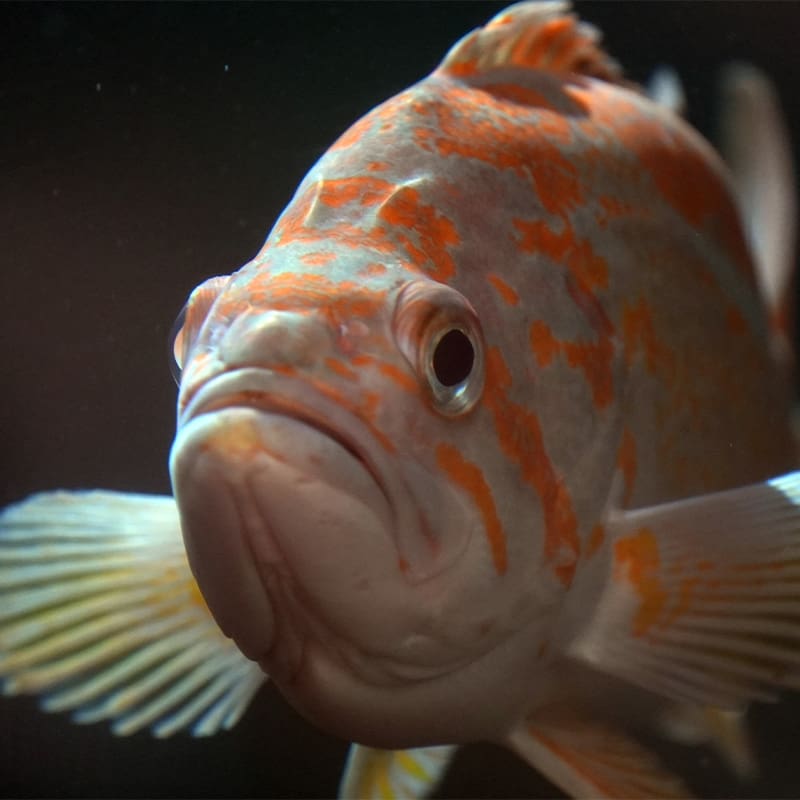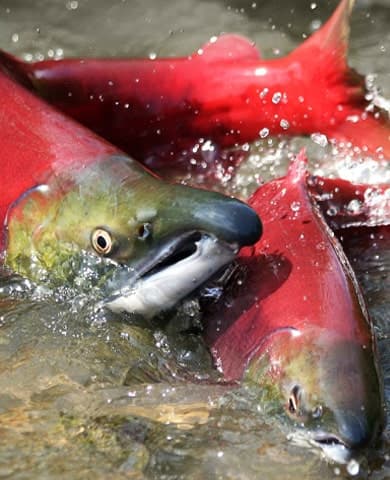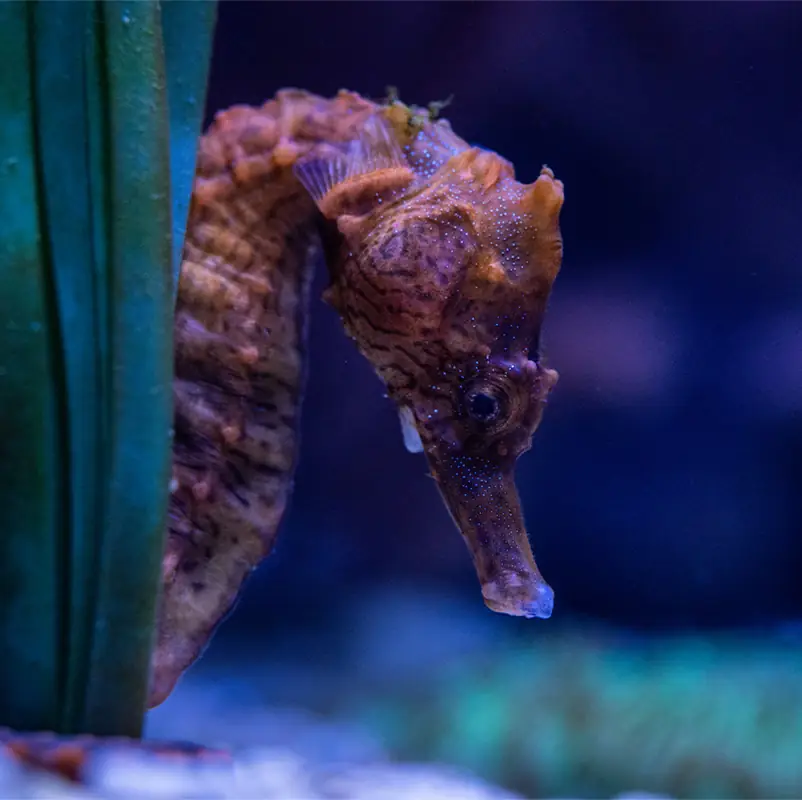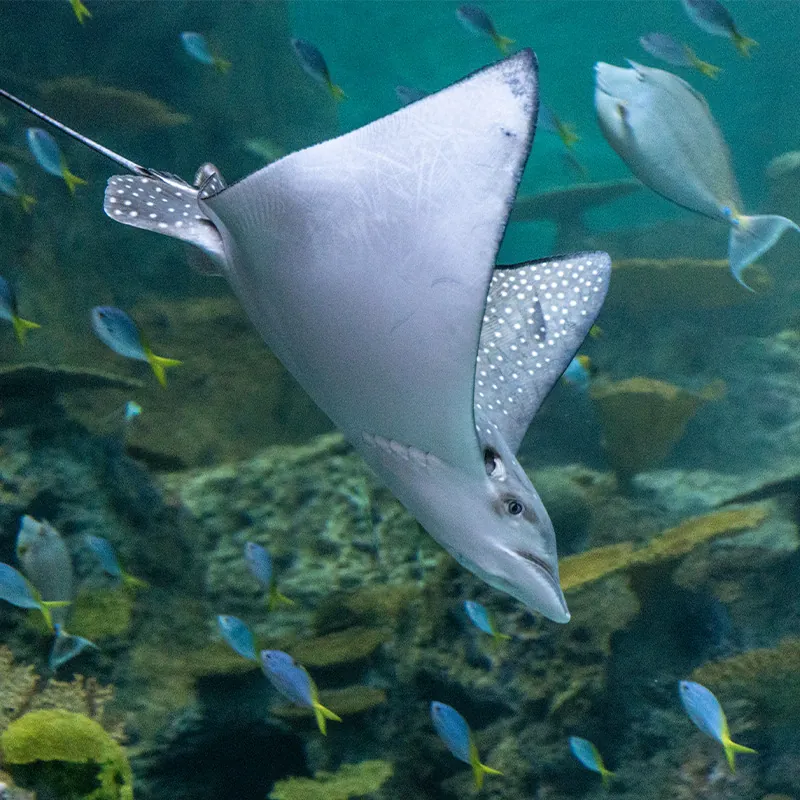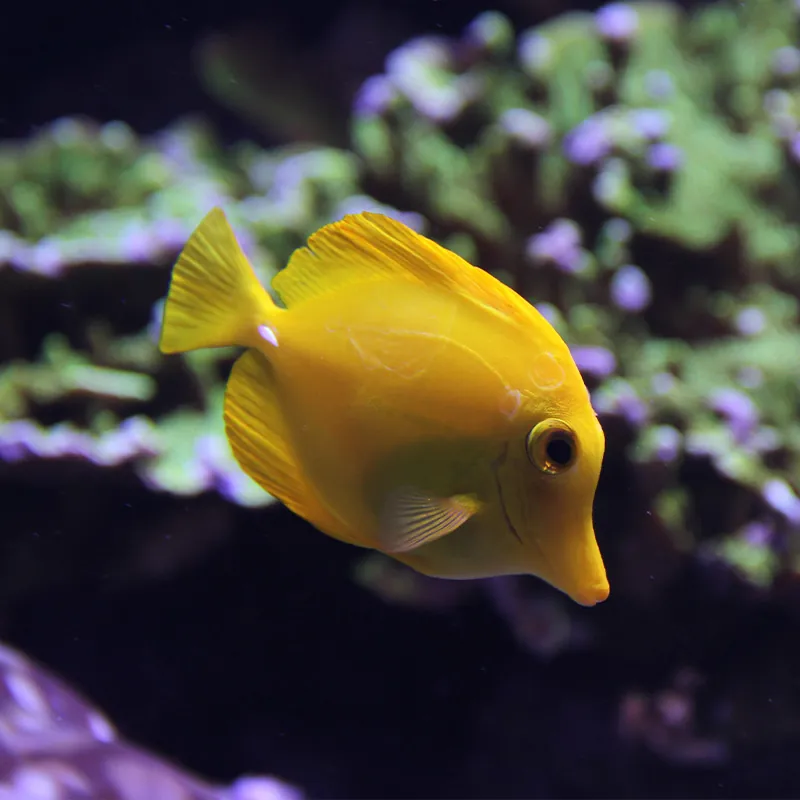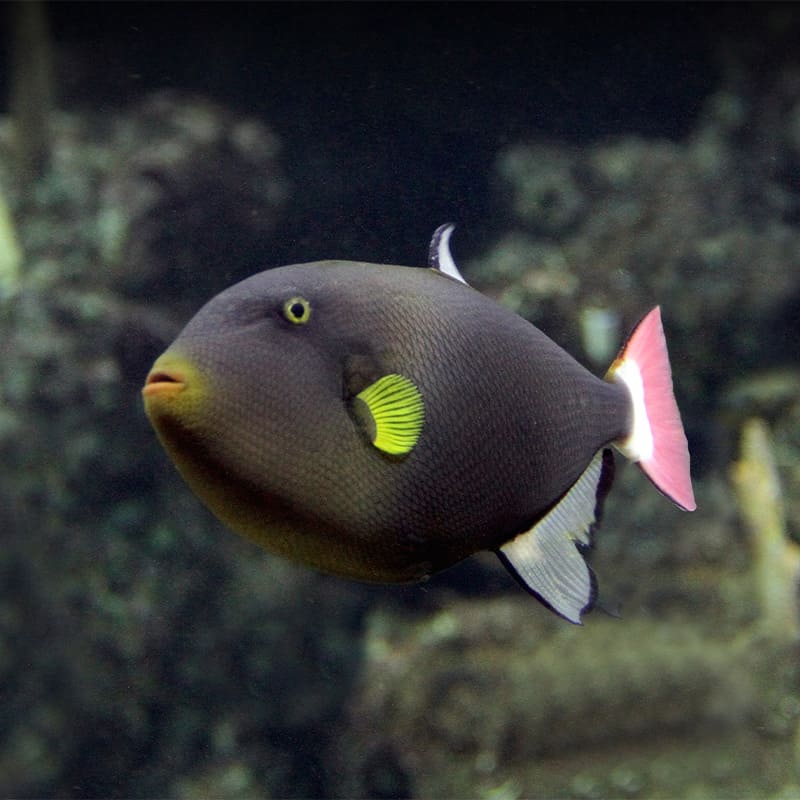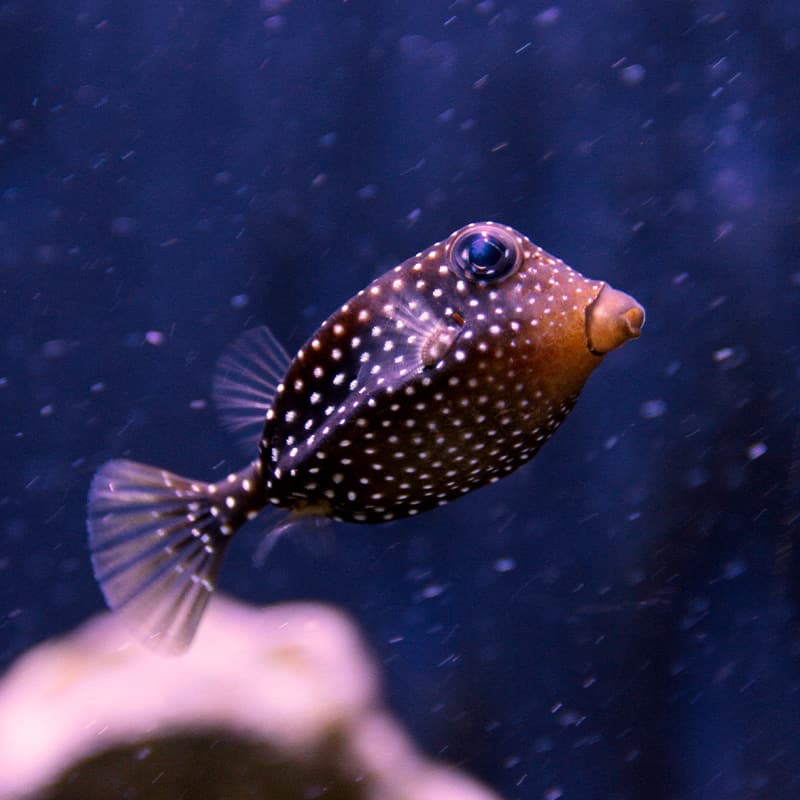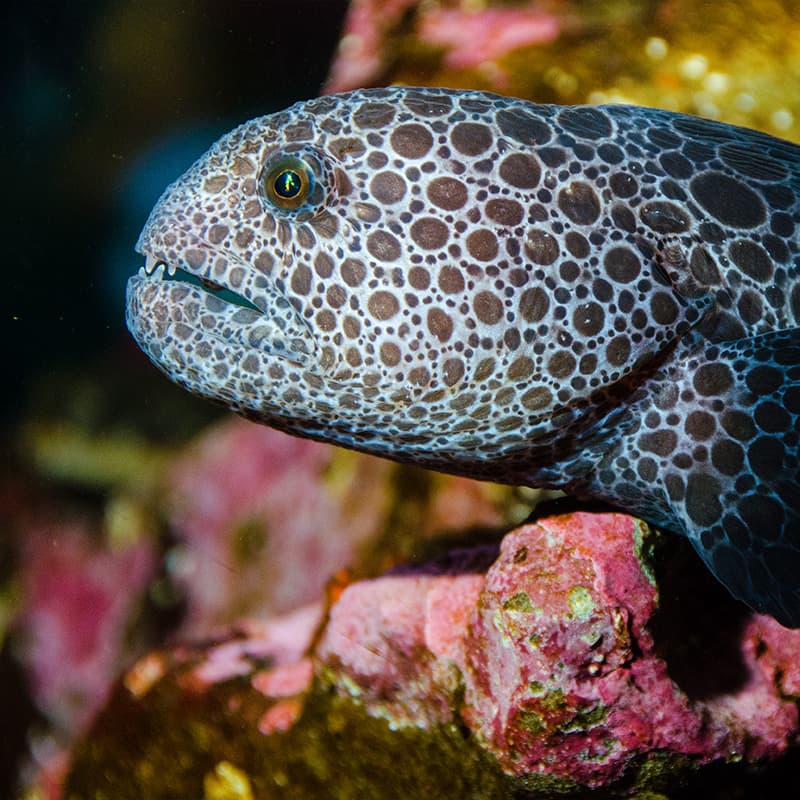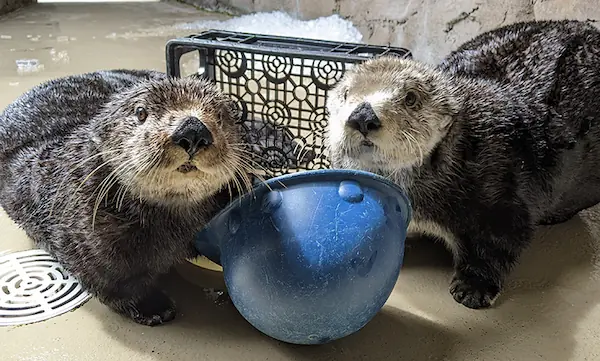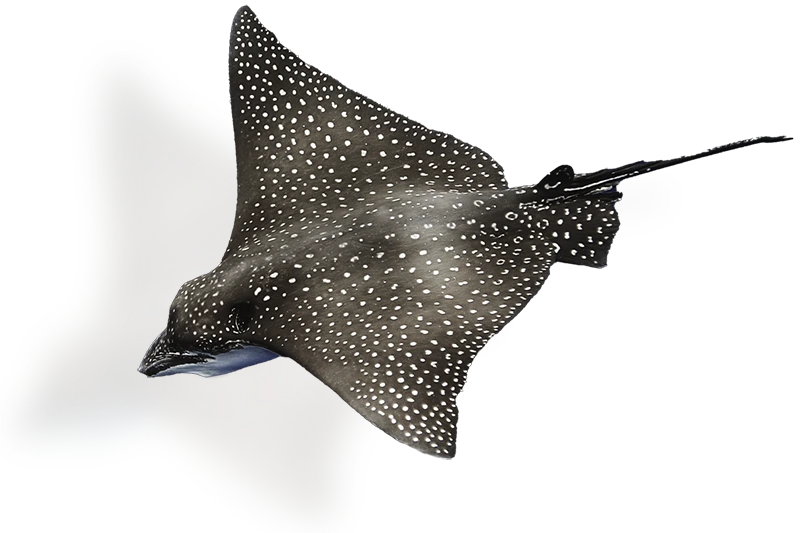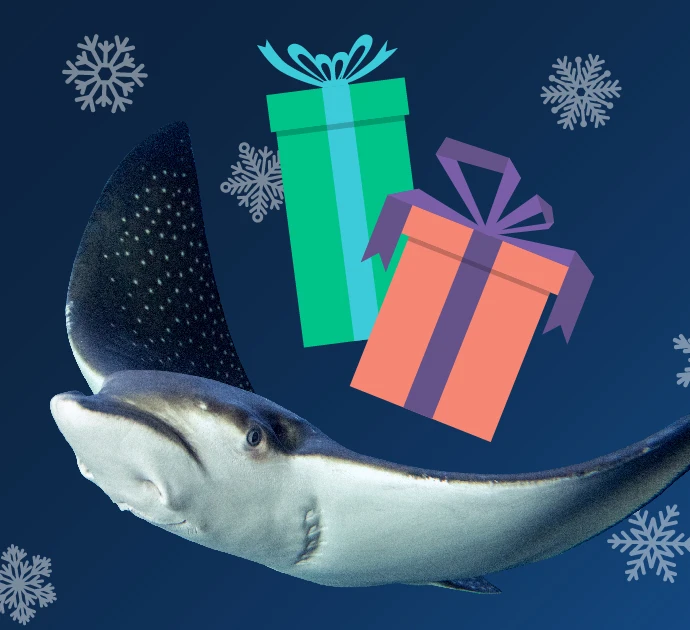- Fish
Sturgeon
An ancient fish with a long life span
Sturgeon—the common name for over 20 species of fish—have been around since dinosaurs roamed the Earth. Their life spans are lengthy too: while the average is 50 to 60 years, some individuals can live to be 100 or even older! Here at the Aquarium, we have two species of sturgeon in our care: white sturgeon, Acipenser transmontanus, and green sturgeon, Acipenser medirostris.
At the Aquarium
- Underwater Dome, Pier 60
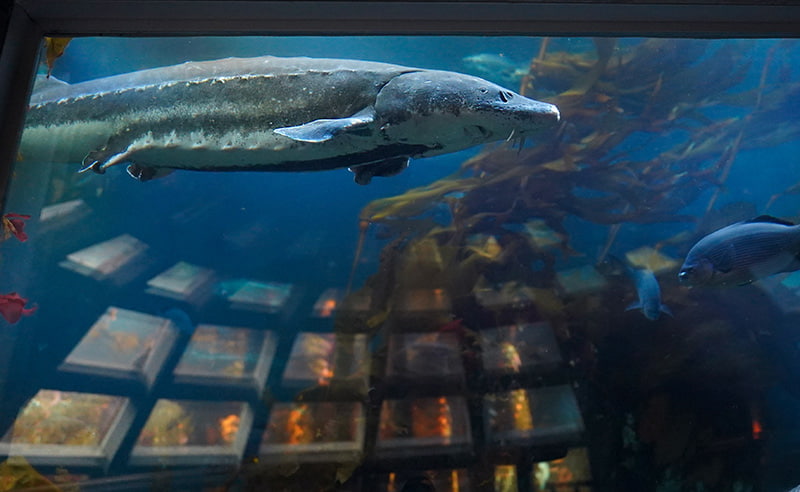
Quick sturgeon stats
Sturgeon are bottom-dwelling fish that are found in temperate waters throughout the Northern Hemisphere. Size varies widely between species. White sturgeon typically grow to about 5–7 feet in length; green sturgeon are a bit smaller, at 4.5–6.5 feet. All sturgeon have rows of bony plates, called scutes, that cover their heads and run down their long bodies, serving as protective armor. Sturgeon are also distinguished by four barbels, which look like long whiskers, between their mouth and snout.
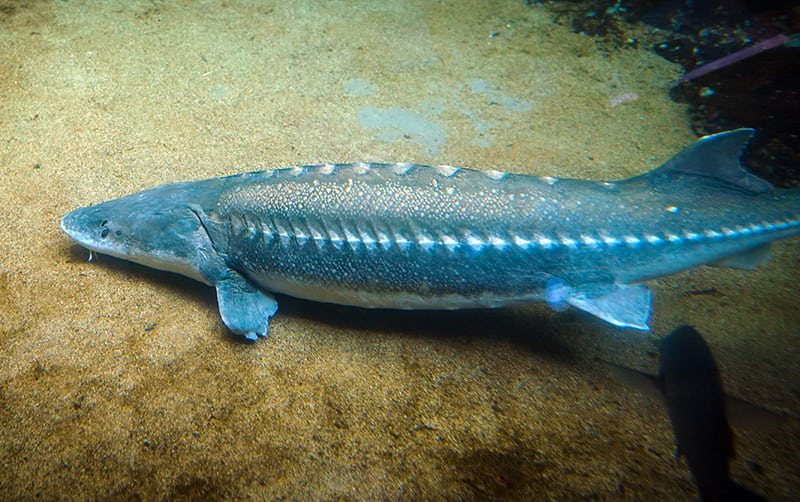
“What kind of shark is that?”
It’s not surprising that some visitors to our Underwater Dome habitat ask if the big, grayish fish hovering near the sandy bottom is a shark. With their long bodies, pointy snouts and dorsal fins, sturgeon bear more than a passing resemblance to sharks. And, like sharks, sturgeon have smooth skin and cartilaginous skeletons—meaning their skeletons are made of cartilage, not bone. But sturgeon differ from sharks in many ways, with a key difference being that they don’t have teeth.
Sturgeon…or salmon?
While our guests are far less likely to confuse a sturgeon for a salmon, the two fish do have something in common: they’re anadromous, which means they migrate from freshwater to salt water and back. But unlike salmon, sturgeon don’t die after spawning. Local sturgeon species typically spend more of their lives in estuarine or marine environments (in other words, in areas where rivers meet salt water and in salt water), returning to freshwater only periodically to spawn.
Feeling their way along
Sturgeon use their delicate barbels—the long, whisker-like feelers between their noses and mouths—to forage for food. They drag the barbels along the bottom, searching for shellfish, invertebrates (animals without backbones) and small fish, among other types of prey. After locating a tasty morsel, the sturgeon sucks it up with its toothless mouth and swallows it whole.
SOS for (some) sturgeon
With over 85% of their species classified as “critically endangered” by the International Union for the Conservation of Nature, sturgeon are technically the most threatened group of animals on the organization’s Red List of Threatened Species.
However, most species on the list are found only in Europe and Asia, where females are harvested for their unfertilized eggs. (Ever heard of beluga caviar, considered to be the world’s finest? It comes from beluga sturgeon in the Caspian Sea.) Thankfully, U.S. Fish & Wildlife protections have kept our native populations below the critically threatened level.
Regardless of where they live or their conservation status, sturgeon need a healthy habitat to thrive. Visit our Act for the Ocean page to learn how you can make a difference for them—and all the animals in the ocean.
Quick facts
Some sturgeon can live to be over 100 years old!
Not a shark! Sturgeon are a completely separate species of fish.
Sturgeon use their barbels to feel for food along the seafloor!
